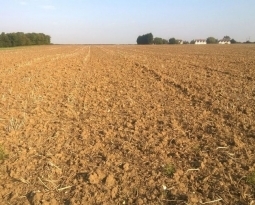Kentucky Patent of the Month – November 2021
Virtual Peaker, Inc. is a Kentucky-based company focused on transforming the electric grid in an effort to combat climate change. Climate change solutions come in many forms and Virtual Peaker is tackling that of improving resource distribution. Part of improving the electric grid, and the distribution of these resources, is a temporally based distribution. We see these solutions already in play when our utility companies set “peak times”. These peak times encourage users to operate their energy consuming devices (eg. washer, dryer etc.) at set times that are known for being low consumption. This redirects energy consumption and spreads it out throughout the day.
Virtual Peaker has taken this temporal distribution into account and developed systems for time use optimization to further enhance their effect. A Time of Use (TOU) electricity rate is a pricing structure for electricity that changes based on the time of day and week – this is what is used to guide the peak times. Typically the price is lower at night and more expensive during the working day as this is when more machines are in use and more energy consumed. Once Virtual Power had developed a system which gathers data regarding price and time of use, they set up their own TOU system followed by an iterative learning algorithm. In the case of a water heater, the algorithm would then adjust the water temperature set point based on time of day and week. With this system in place, a remote computing device can be coupled to the utility and control the temperature set or consumption rate. IT receives a schedule for the time of use and communicates with the thermostat to regulate temperature. In this way, the device can operate in a way to maximize efficiency and reduce cost without limiting the user-defined level of service. This service optimizes cost and efficiency for the user while improving the impact it has on the environment.
Are you developing new technology for an existing application? Did you know your development work could be eligible for the R&D Tax Credit and you can receive up to 14% back on your expenses? Even if your development isn’t successful your work may still qualify for R&D credits (i.e. you don’t need to have a patent to qualify). To find out more, please contact a Swanson Reed R&D Specialist today or check out our free online eligibility test.
Who We Are:
Swanson Reed is one of the U.S.’ largest Specialist R&D tax advisory firms. We manage all facets of the R&D tax credit program, from claim preparation and audit compliance to claim disputes.
Swanson Reed regularly hosts free webinars and provides free IRS CE and CPE credits for CPAs. For more information please visit us at www.swansonreed.com/webinars or contact your usual Swanson Reed representative.

















